How to clean terracotta pots: 5 simple steps for giving planters a spruce
Learning how to clean terracotta pots is beneficial for plant health – our quick and easy guide explains how to do it
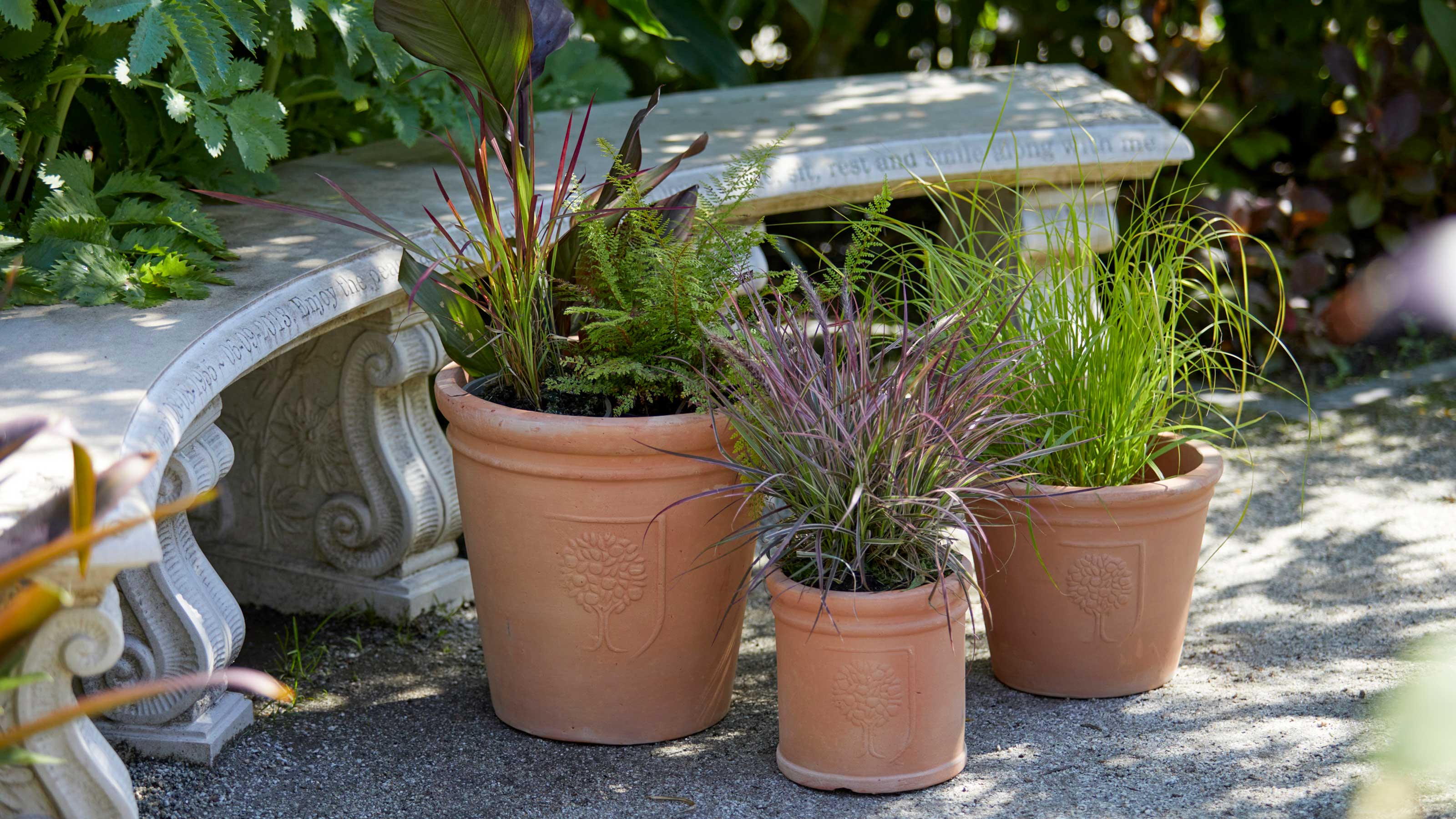

Knowing how to clean terracotta pots properly is a useful skill for any gardener. And although it may seem simple, there are some tricks and tips to take on board.
There are all kinds of containers available, but terracotta ones are a classic choice and very widely used. Ensuring they're kept clean will help keep your container gardening ideas looking their best. But, it's also beneficial for plant health, as it reduces the risk of pests and diseases becoming a problem.
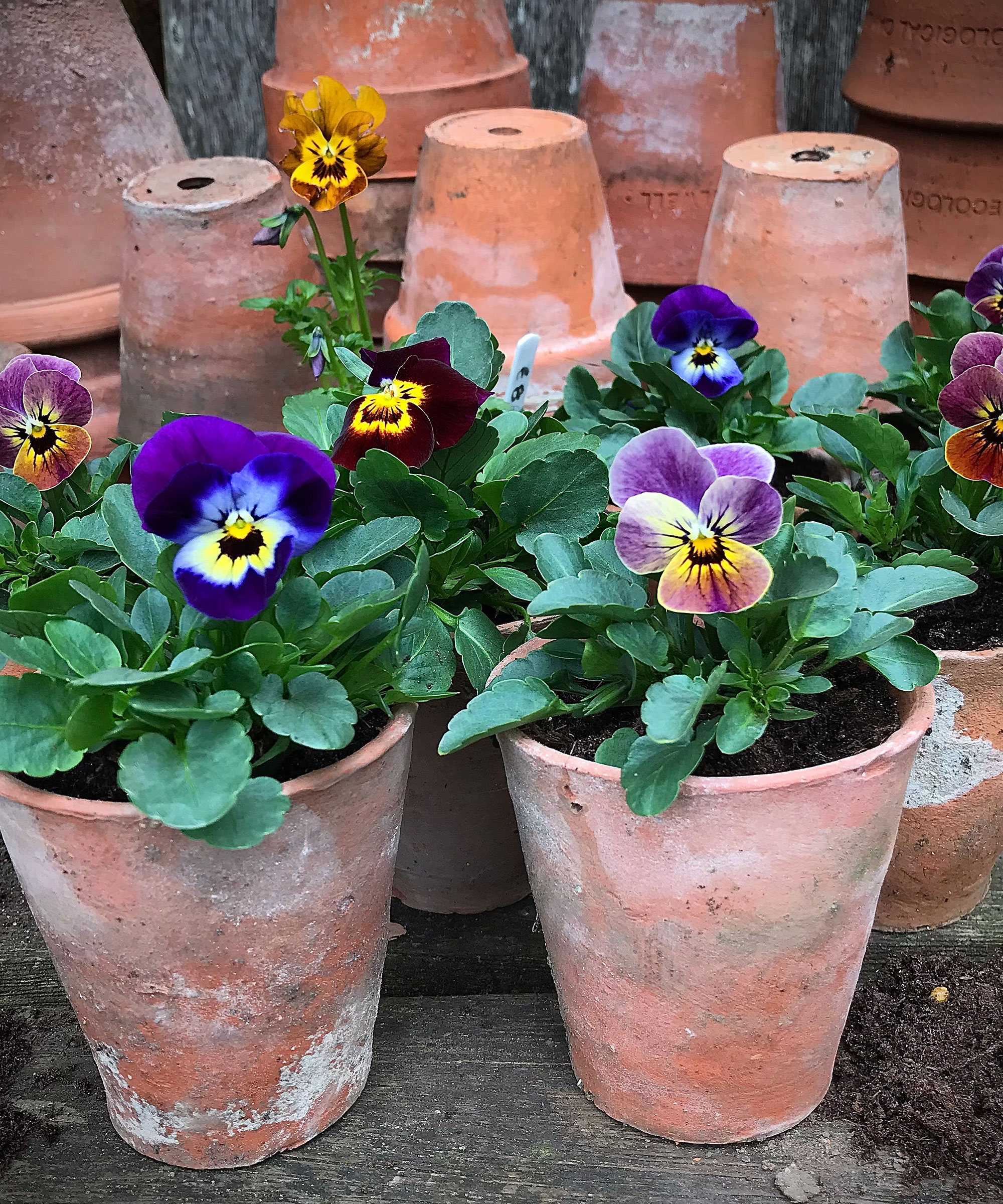
Terracotta pots suit all kinds of planting schemes
How to clean terracotta pots in 5 simple steps
Learning how to clean terracotta garden planters is super straightforward and well worth doing. Just follow these steps:
- Michael Wooldridge, Director of UK-based pot distributor Woodlodge, says to start by emptying your pots of any old plants and compost.
- Brush down the insides with a stiff brush and clean water to remove any debris, he continues.
- Michael then suggests mixing together a weak bleach and water solution to fill your pots with. One part bleach to nine parts water is a good ratio to use. If your pots have drainage holes, put them in a large bucket or trug and fill this with the solution instead. Allow the pots to soak for half an hour, Micheal advises – this will remove any lingering bacteria and can help to prevent pests and diseases from affecting your plants.
- Then, pour away the solution, says Michael – but be careful not to get this on your lawn or flower bed as the bleach may damage the plants. Then, rinse the pots well, giving any stubborn stains a final scrub if necessary while wearing gloves to protect your hands.
- Leave them somewhere sunny to air dry.
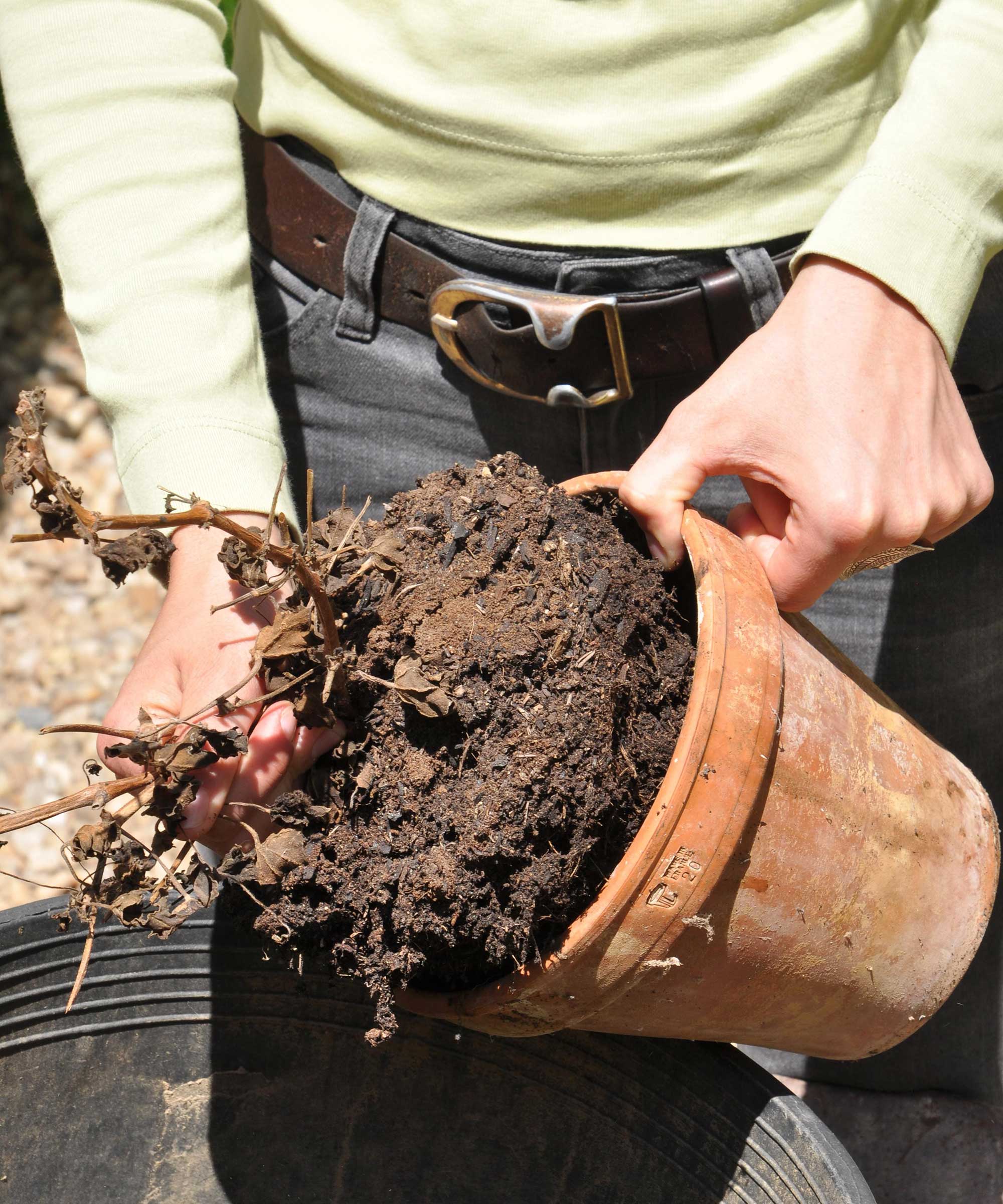
Remove old compost and plants first
When should you clean terracotta pots?
'Once your plant has reached the end of the flowering period or you need to repot it, it is important to make sure that your terracotta planters are cleaned for the new growing season ahead,' says the experts at Woodlodge.
If you're putting your pots into storage – in the shed or garage, for instance – it's wise to clean them beforehand. In fact, not doing so is a common container gardening mistake that's easily avoided. As the RHS says, 'Undisturbed pots can be breeding grounds for pests and diseases – especially baby slugs.'
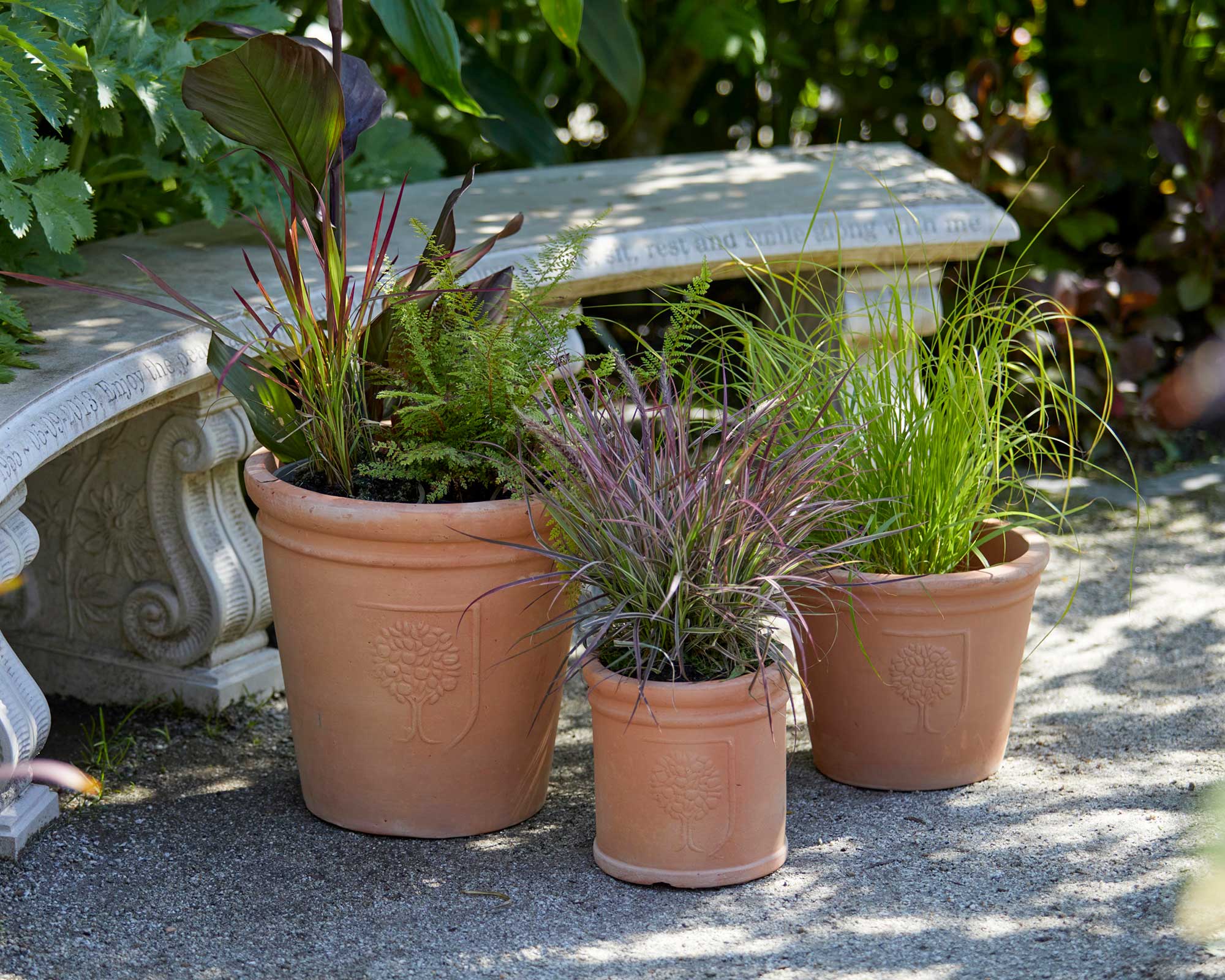
This gorgeous trio of pots is from Woodlodge
Can you use vinegar to clean terracotta pots?
If you're not keen on the idea of using bleach in your garden, white vinegar can make an effective and budget-friendly alternative. Simply dilute a small amount with warm water (1 cup of 5% acidity white vinegar for every 3–4 cups of water should do the job). Then, leave your pots to soak in the solution before giving them a good scrub (again, wearing gloves) and a rinse.
Some gardeners also use it to spot-treat particularly stubborn stains, by saturating a cloth with neat vinegar and wiping them down before rinsing well.
Just like with bleach, be careful not to pour the solution over any precious plants or your lawn once you've finished with it, as it can harm them. In fact, some gardeners use vinegar as a cheap way to get rid of weeds.
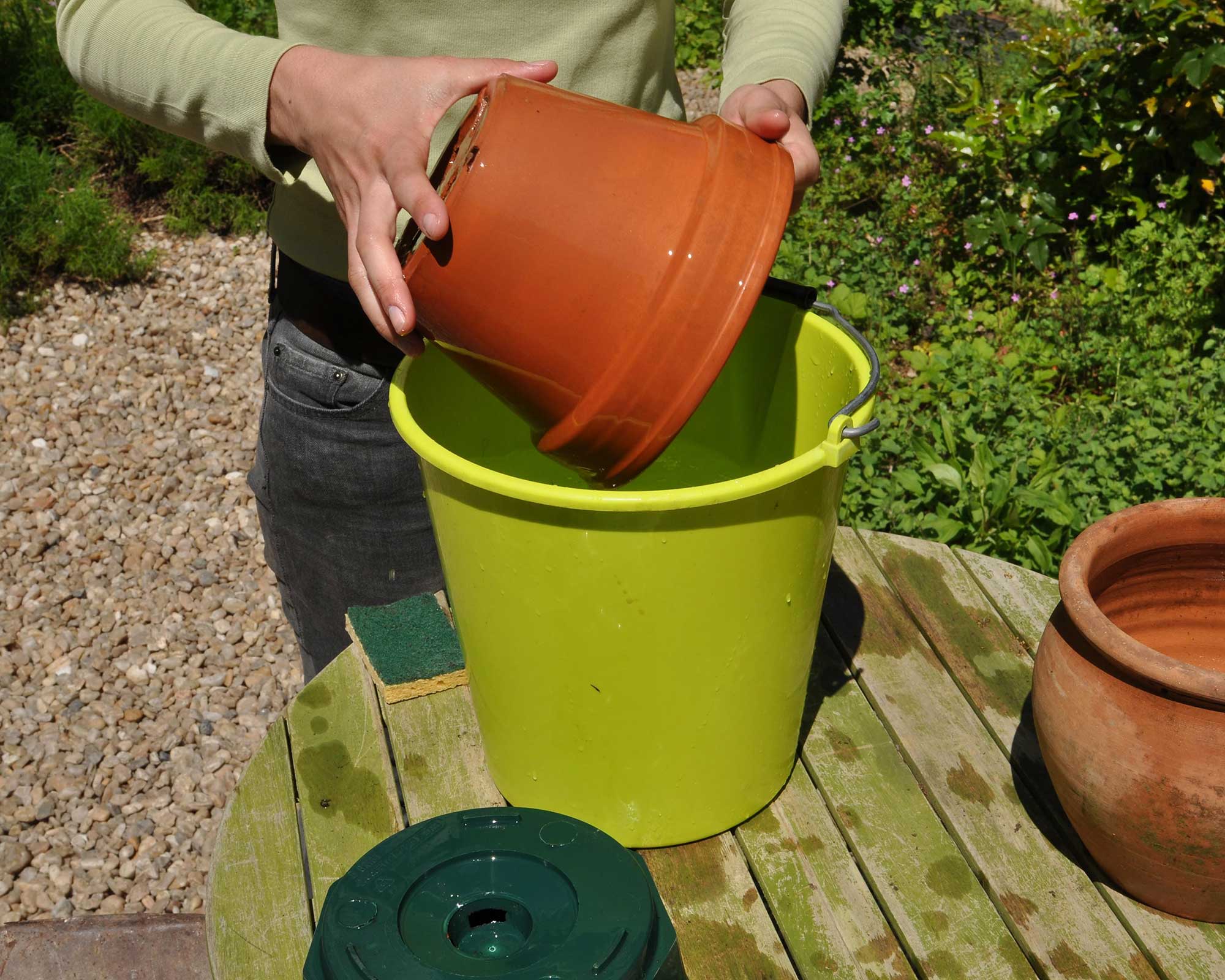
You can soak your pots in a water and vinegar solution
Why do terracotta pots develop white patches over time?
Over time, terracotta pots can develop a white 'crust'. This is a build-up of chemical deposits and salts from tap water and fertilizers.
Using vinegar or bleach as directed above can help remove this (but never combine the two as doing so creates a toxic chlorine gas which can be very dangerous). Watering plants with rainwater instead of tap water can slow down the process of it happening again.
If you quite like the vintage, 'distressed' look, you can always recreate it with exterior paint.
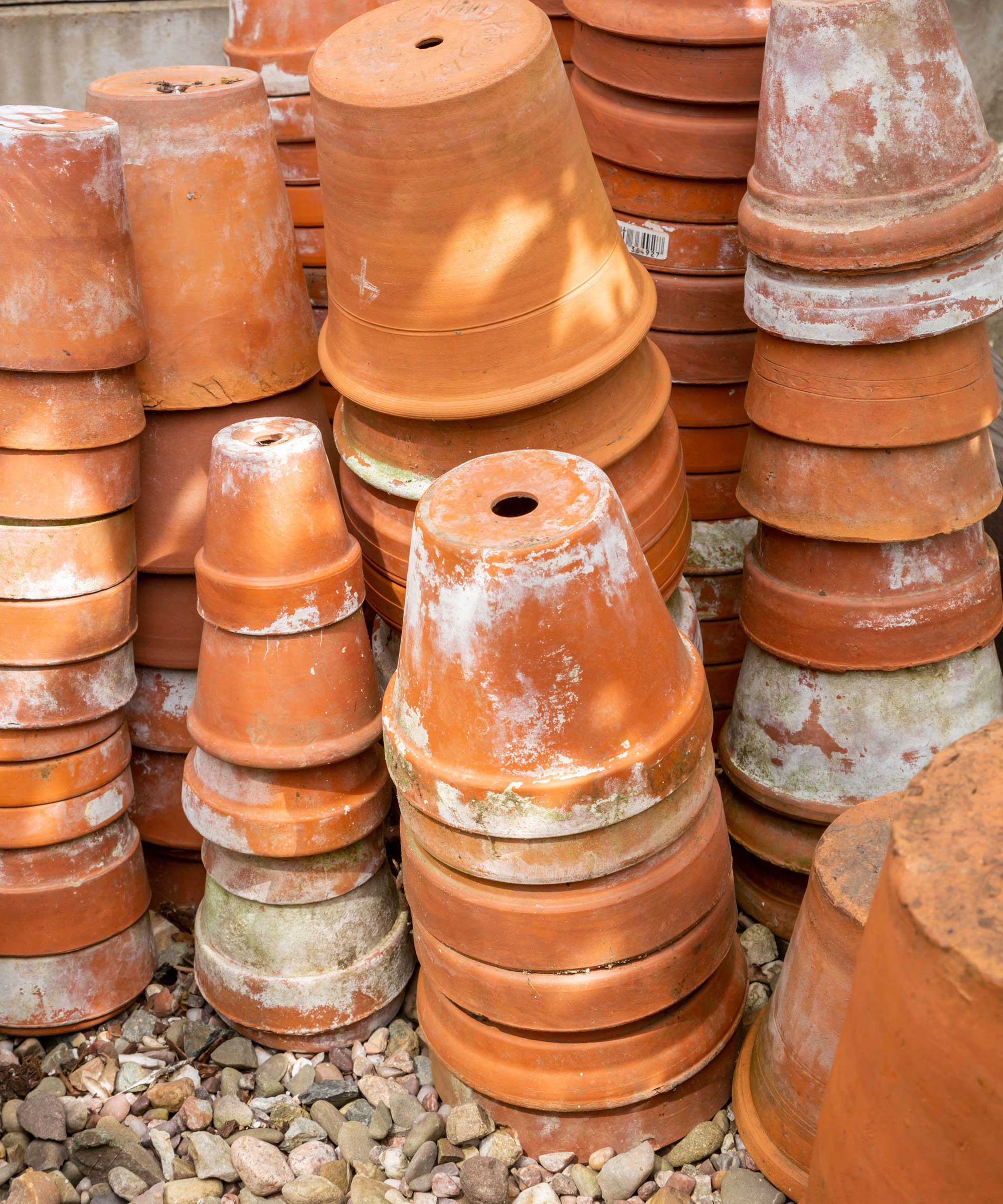
White markings are a result of built-up chemicals and salts
What should you do with broken terracotta pots?
Don't throw all your broken terracotta pots away – they can be useful.
The pieces can be used as 'crocks' if placed at the bottom of other containers. This will create better drainage and therefore help to prevent compost from becoming waterlogged and plants' roots to rot.
You could also use them in creative ways around your plot – for cheap garden edging or for plant labels, for instance.
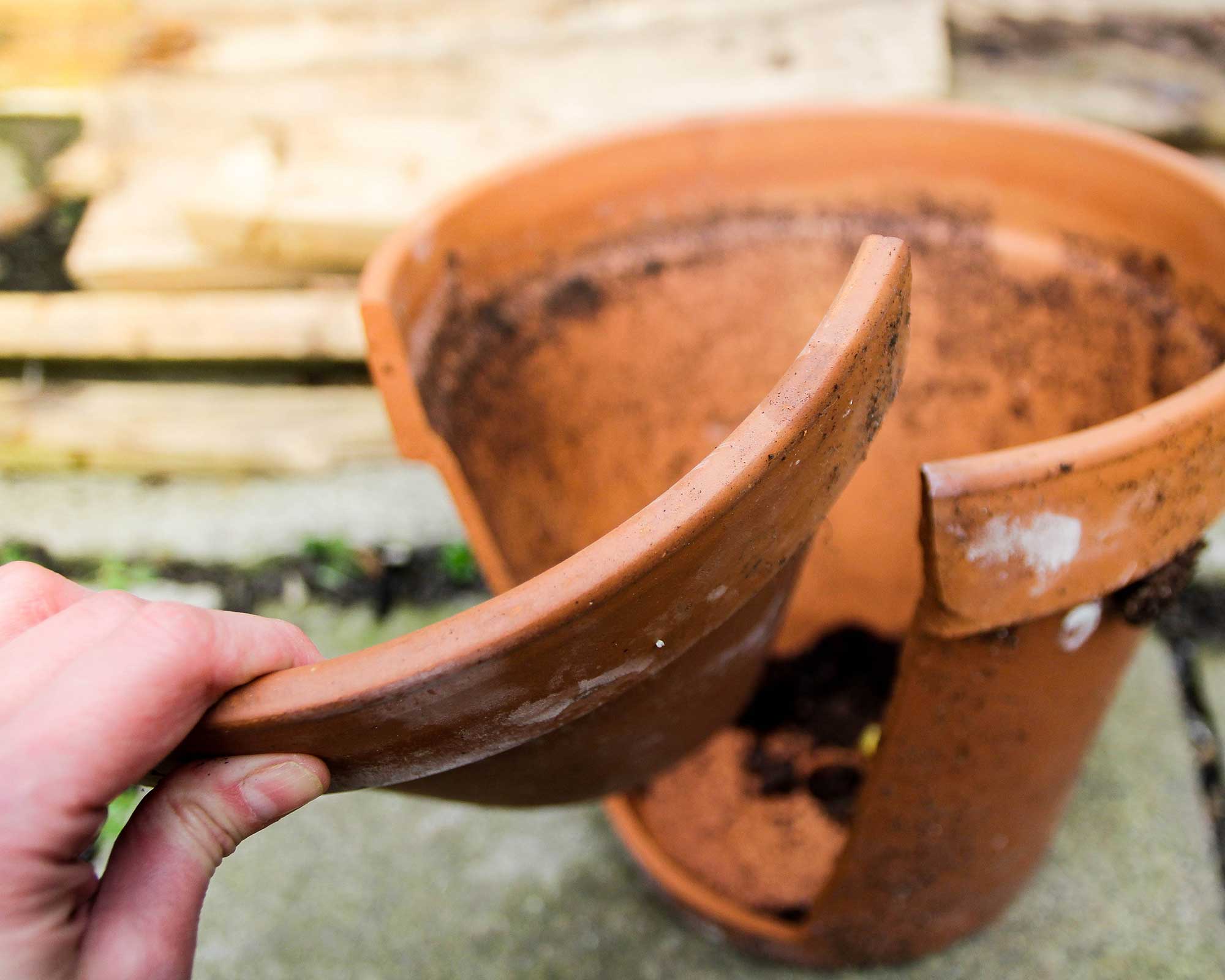
Pieces of broken pot can be used to improve soil drainage elsewhere

The garden was always a big part of Holly's life growing up, as was the surrounding New Forest where she lived. Her appreciation for the great outdoors has only grown since then. She's been an allotment keeper, a professional gardener, and a botanical illustrator – plants are her passion.
